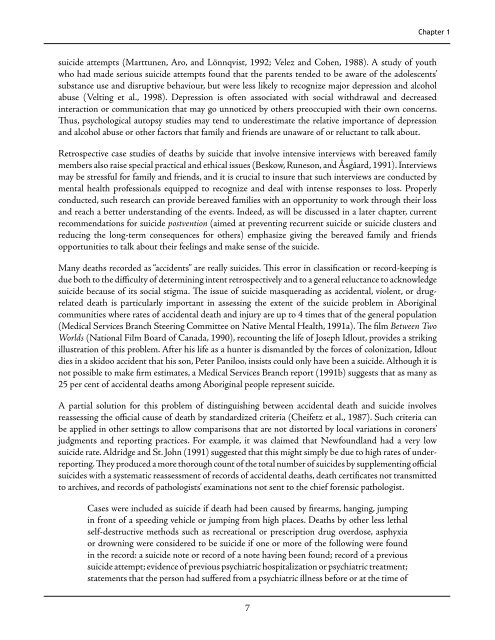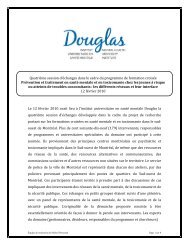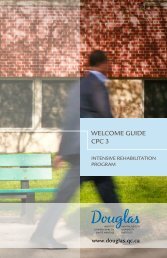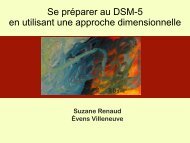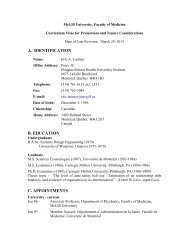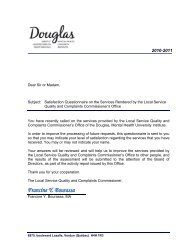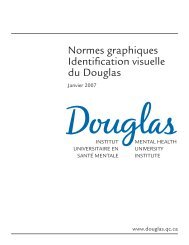Suicide Among Aboriginal People in Canada - Institut universitaire ...
Suicide Among Aboriginal People in Canada - Institut universitaire ...
Suicide Among Aboriginal People in Canada - Institut universitaire ...
You also want an ePaper? Increase the reach of your titles
YUMPU automatically turns print PDFs into web optimized ePapers that Google loves.
Chapter 1suicide attempts (Marttunen, Aro, and Lönnqvist, 1992; Velez and Cohen, 1988). A study of youthwho had made serious suicide attempts found that the parents tended to be aware of the adolescents’substance use and disruptive behaviour, but were less likely to recognize major depression and alcoholabuse (Velt<strong>in</strong>g et al., 1998). Depression is often associated with social withdrawal and decreased<strong>in</strong>teraction or communication that may go unnoticed by others preoccupied with their own concerns.Thus, psychological autopsy studies may tend to underestimate the relative importance of depressionand alcohol abuse or other factors that family and friends are unaware of or reluctant to talk about.Retrospective case studies of deaths by suicide that <strong>in</strong>volve <strong>in</strong>tensive <strong>in</strong>terviews with bereaved familymembers also raise special practical and ethical issues (Beskow, Runeson, and Åsgåard, 1991). Interviewsmay be stressful for family and friends, and it is crucial to <strong>in</strong>sure that such <strong>in</strong>terviews are conducted bymental health professionals equipped to recognize and deal with <strong>in</strong>tense responses to loss. Properlyconducted, such research can provide bereaved families with an opportunity to work through their lossand reach a better understand<strong>in</strong>g of the events. Indeed, as will be discussed <strong>in</strong> a later chapter, currentrecommendations for suicide postvention (aimed at prevent<strong>in</strong>g recurrent suicide or suicide clusters andreduc<strong>in</strong>g the long-term consequences for others) emphasize giv<strong>in</strong>g the bereaved family and friendsopportunities to talk about their feel<strong>in</strong>gs and make sense of the suicide.Many deaths recorded as “accidents” are really suicides. This error <strong>in</strong> classification or record-keep<strong>in</strong>g isdue both to the difficulty of determ<strong>in</strong><strong>in</strong>g <strong>in</strong>tent retrospectively and to a general reluctance to acknowledgesuicide because of its social stigma. The issue of suicide masquerad<strong>in</strong>g as accidental, violent, or drugrelateddeath is particularly important <strong>in</strong> assess<strong>in</strong>g the extent of the suicide problem <strong>in</strong> <strong>Aborig<strong>in</strong>al</strong>communities where rates of accidental death and <strong>in</strong>jury are up to 4 times that of the general population(Medical Services Branch Steer<strong>in</strong>g Committee on Native Mental Health, 1991a). The film Between TwoWorlds (National Film Board of <strong>Canada</strong>, 1990), recount<strong>in</strong>g the life of Joseph Idlout, provides a strik<strong>in</strong>gillustration of this problem. After his life as a hunter is dismantled by the forces of colonization, Idloutdies <strong>in</strong> a skidoo accident that his son, Peter Paniloo, <strong>in</strong>sists could only have been a suicide. Although it isnot possible to make firm estimates, a Medical Services Branch report (1991b) suggests that as many as25 per cent of accidental deaths among <strong>Aborig<strong>in</strong>al</strong> people represent suicide.A partial solution for this problem of dist<strong>in</strong>guish<strong>in</strong>g between accidental death and suicide <strong>in</strong>volvesreassess<strong>in</strong>g the official cause of death by standardized criteria (Cheifetz et al., 1987). Such criteria canbe applied <strong>in</strong> other sett<strong>in</strong>gs to allow comparisons that are not distorted by local variations <strong>in</strong> coroners’judgments and report<strong>in</strong>g practices. For example, it was claimed that Newfoundland had a very lowsuicide rate. Aldridge and St. John (1991) suggested that this might simply be due to high rates of underreport<strong>in</strong>g.They produced a more thorough count of the total number of suicides by supplement<strong>in</strong>g officialsuicides with a systematic reassessment of records of accidental deaths, death certificates not transmittedto archives, and records of pathologists’ exam<strong>in</strong>ations not sent to the chief forensic pathologist.Cases were <strong>in</strong>cluded as suicide if death had been caused by firearms, hang<strong>in</strong>g, jump<strong>in</strong>g<strong>in</strong> front of a speed<strong>in</strong>g vehicle or jump<strong>in</strong>g from high places. Deaths by other less lethalself-destructive methods such as recreational or prescription drug overdose, asphyxiaor drown<strong>in</strong>g were considered to be suicide if one or more of the follow<strong>in</strong>g were found<strong>in</strong> the record: a suicide note or record of a note hav<strong>in</strong>g been found; record of a previoussuicide attempt; evidence of previous psychiatric hospitalization or psychiatric treatment;statements that the person had suffered from a psychiatric illness before or at the time of


